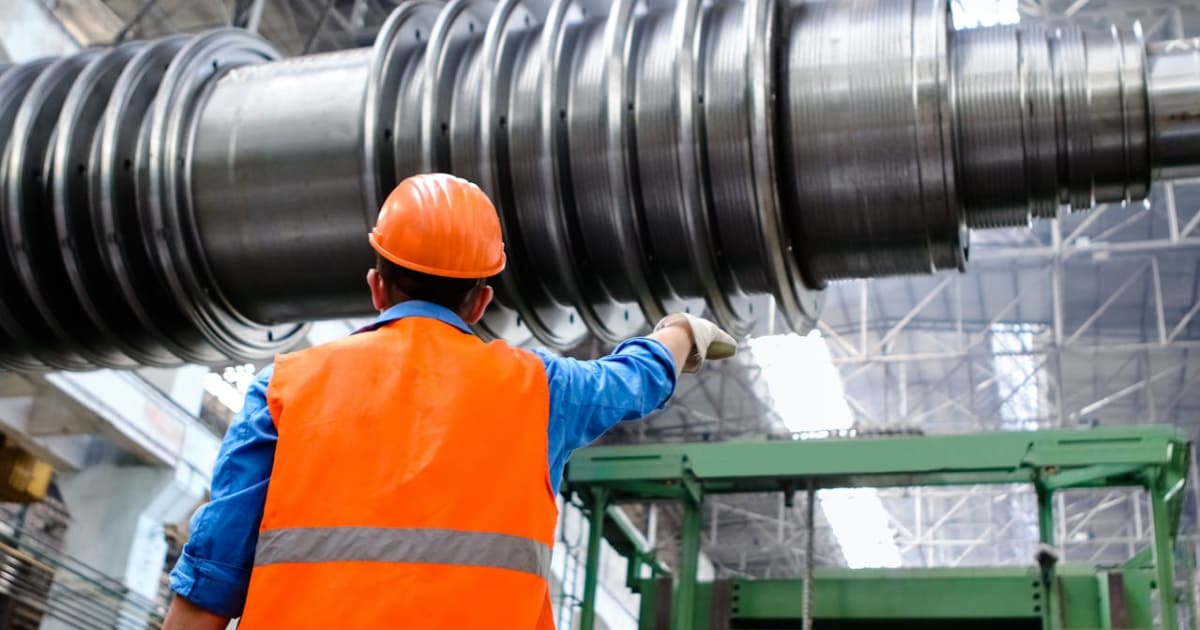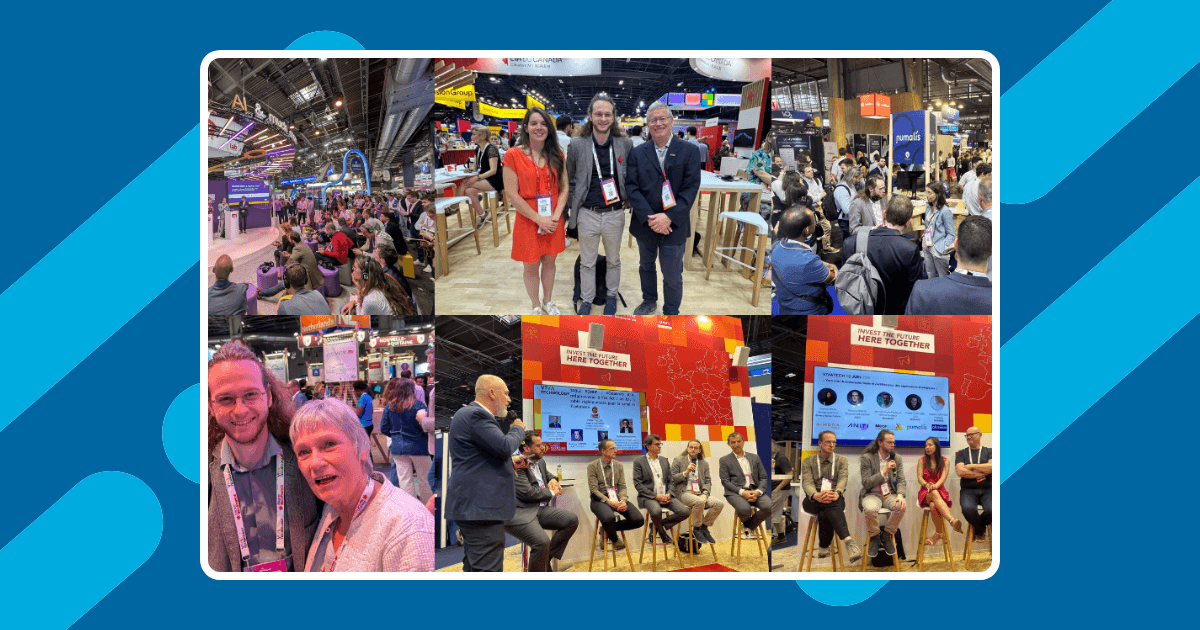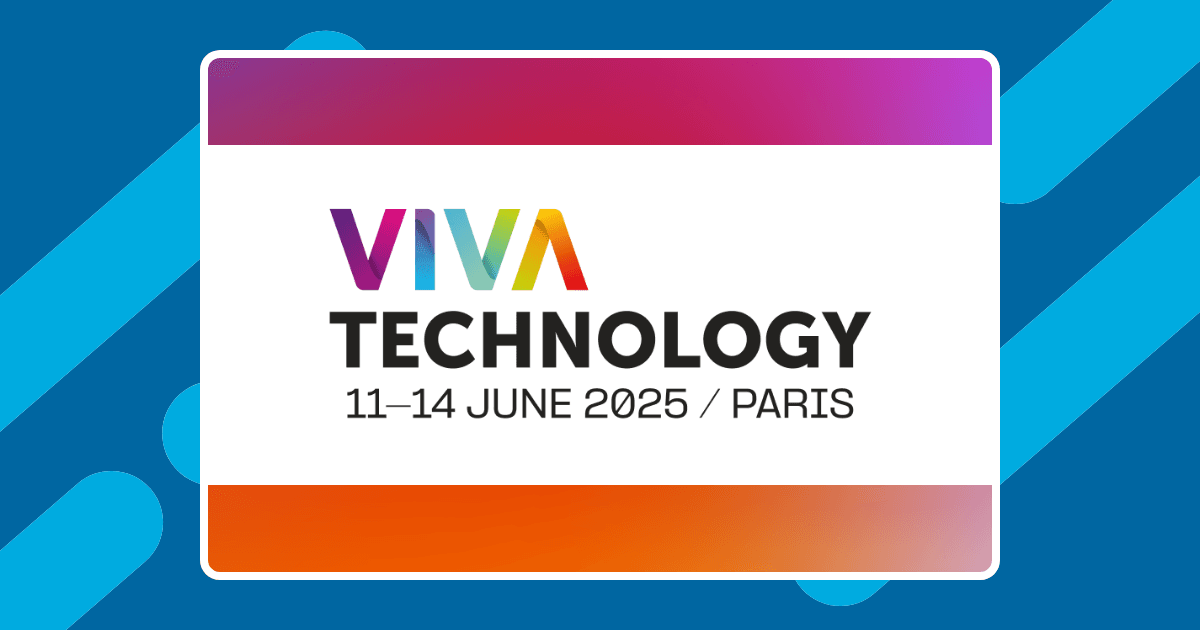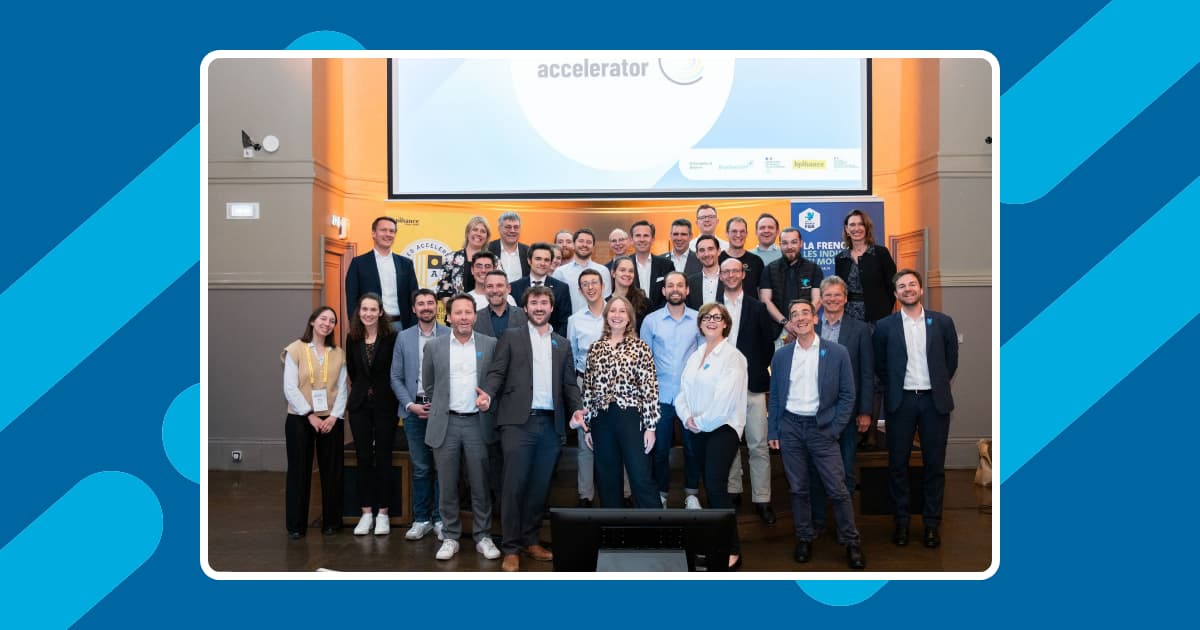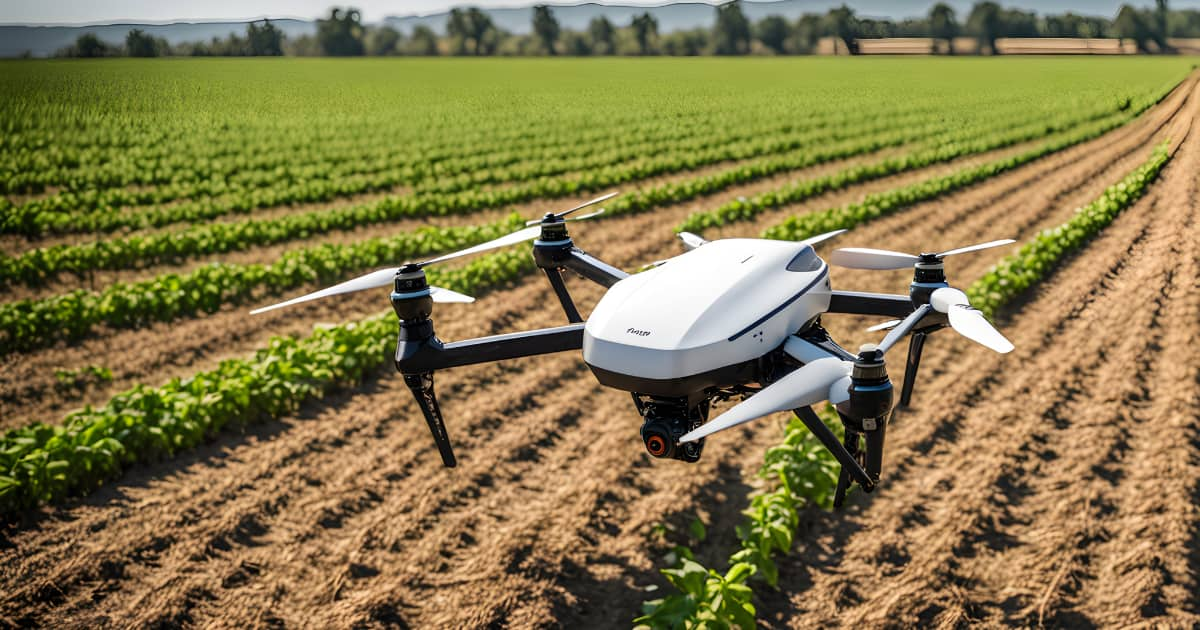Manufacturers face multiple challenges in operations and production, with the biggest ones being instability in the supply chain, rising costs, inconsistent quality, and rigid production lines. However, artificial intelligence(AI) promises to be a key driver to progress as the sector looks towards Industry 4.0, which promises digitization.
Recently, advancements in AI, such as generative AI, machine learning(ML), deep learning(DL), and computer vision, are capable of transforming the sector. The technology is expected to contribute significantly, with applications ranging from production lines to supply chain management.
A survey by Deloitte shows that 93% of manufacturing companies believe that AI will be pivotal going forward. Uptake of the technology is also rising, with the global AI in manufacturing market size forecast to hit $68 billion by 2032. This represents a compound growth rate of 33.5% between 2022-20321.
Intelligent quality inspection, autonomous robotics systems, and smart customer service are some of the use cases of AI in manufacturing. This article explores the relationship between manufacturing and AI, the benefits, challenges, and more.
The role of AI in manufacturing and production
AI significantly augments processes and streamlines workflows in manufacturing. Here are the best AI in manufacturing examples.
Intelligent quality control
AI is playing a critical role in boosting the quality assurance process across different manufacturers. Using AI-based software, intelligent cameras and sensors quickly improve speed and inspection quality. Traditionally, manufacturers relied on machine vision systems or humans for quality control. The vision systems were programmed by experts using rules specifying the desired outcome using multiple product features2.
However, with the increased complexity of products and operating environment, relying on traditional systems results in inefficiencies. With computer vision and machine learning models, inspection systems have taken a leap.
The CTO at Neurala, a developer of visual inspection tools, affirms that neural network algorithms can be used to develop quality inspection models with precise and low error classifications. Algorithms such as deep neural networks (DNN) can be trained to visually classify items depending on the data they receive.
Visual inspection AI applies to various factories, including automotive, semiconductor, and electronics. For instance, in PCB manufacturing, AI-powered systems inspect multiple components on the circuit board to detect soldering issues or missing components like springs and screws3.
Companies like Google are already offering deep-learning algorithms for quality inspections. The solution has an assembly inspection that detects the tiniest of defects4. Foxconn uses this solution for electronics quality control. This has resulted in faster inspection times at 0.3 seconds per component while reducing the proportion of defects unidentified to 10%.
Preventive and predictive maintenance
First of all, let’s distinguish between reactive maintenance, preventive maintenance and predictive maintenance. Reactive maintenance, where assets break down before they can be serviced, results in significant costs due to production stoppages. Preventive maintenance follows a pre-established schedule with the help of the equipment manufacturer/supplier to carry out regular maintenance operations to avoid breakdowns. Predictive maintenance monitors the operating data of a piece of equipment and identifies signs or makes predictions about elements that would suggest a risk of future breakdown, so that maintenance can be carried out before a problem occurs.
According to a study by Deloitte, predictive maintenance is the best way to prevent downtime. The report indicates it reduces breakdowns by 70% and lowers maintenance spending by 25% while increasing productivity by another 25%5.
It’s possible to develop an intelligent solution for equipment maintenance using historical data, IoT sensors, data analytics, and predictive modelling. ML algorithms like regression, classification, and time series analysis fit this purpose.
However, predictive maintenance is the most expensive to implement, so preventive maintenance may be first preferred.
According to a study by Augury on 500 leaders in manufacturing, reducing unplanned production downtime and optimizing asset care was mission-critical for 28% of them. The use of artificial intelligence in maintenance operations can have several benefits:
- Forecasting the likelihood of machine failure and recommending the best times to conduct maintenance.
- Root cause analysis and using pattern recognition to identify common causes of failure
- Adequate alert times to help schedule maintenance. This improves with models that continually learn.
General Motors(GE) uses AI-based solutions to carry out maintenance operations that identify failing robotic components in its factories. The solution analyzes image feeds from cameras mounted on the assembly robot. While in the initial testing phase, GE analyzed 7000 robots, and the solution identified 72 defects. Preempting asset failure is crucial, with the company estimated to lose $20,000 per minute when production is suspended6.
PepsiCo uses AI-powered predictive maintenance tools, saving 4000 production hours annually. The company saw cost savings from parts replacement, production sustenance, and continuity7.
Product design
Traditionally, product design and engineering are costly and time-consuming endeavors. With manufacturers looking to reduce their time to market, this rigid process makes it impossible to ideate and iterate quickly. AI can elevate this process, enriching and offering new product designs.
At the onset of the design process, AI systems can analyze large datasets to output trends and other valuable insights. Companies can identify what works best for their product and identify enhancements.
Generative design AI(GenAI) allows designers to optimize product and component design. It uses machine learning techniques to generate design possibilities based on constraints and objectives.
For instance, Autodesk has introduced an AI feature offering generative capabilities and intelligent assistance. The Autodesk Fusion 360 solution helps designers create multiple computer-aided designs. Using the solution, design teams can specify variables like materials, performance safety factors, and color to generate innovative designs8.
GenAI helps design lightweight, cost-effective, and aerodynamically efficient parts in the automotive and aerospace industries. For example, Briggs Automotive Company (BAC) used GenAI to design their new supercar. The design eventually led to a 35% decrease in the car weight9.
Additionally, Autodesk also showed the possibilities of GenAI through one of its clients – a mobility startup. The company looked to enhance the generation of new mobility solutions while limiting engineering and manufacturing costs. Consequently, the startup reduced its time to market from 3.5 years to 6 months for new designs.
Combining AI with virtual reality(VR) and augmented reality(AR) can help product engineers simulate different features and circumstances. This helps determine the manufacturability of a design.
Automation
Manufacturers generate vast amounts of data, from manufacturing specifications to supply chain data. It’s possible to use AI to sift through this data, provide insights, and even make decisions. Robotic process automation(RPA) uses AI and ML to tackle high-volume repetitive tasks automatically. Below are different ways manufacturers can use RPA to boost productivity and efficiency in their businesses.
Sentiment analysis: Sales and marketing teams can automatically track customer sentiments using AI. This information helps with better customer engagement and product improvement.
Optical character recognition(OCR): AI-powered OCR makes extracting information from physical documents easier. Manufacturers can use the technology to process and analyze documents automatically, eliminating the need for tedious and error-prone data entry10. Google already provides such a solution, enabling businesses to extract information from documents and images. Manufacturers can create automated document processing pipelines, from analyzing, to storage and management11. Siemens and Google have also partnered to boost automation in industrial processes12. These companies have identified potential use cases of AI in factories that would increase efficiency. For instance, many manufacturers still use legacy software systems coupled with multiple computing systems to analyze documents.
With manufacturers now depending on data-driven insights, legacy ways of manipulating and analyzing data become inefficient and resource-intensive. With AI, manufacturers can automate different pipelines for different tasks, fuelling efficiency and providing real-time insights13.
Additionally, RPA bots can handle common tasks like:
- Opening and printing documents
- Opening emails and sending emails
- Crafting social media posts
- Crafting marketing materials
Robotics
Robotic systems have been at the core of manufacturing since the 1960s. Early on, these systems performed repetitive and monotonous tasks14. However, industries and technologies continue to evolve, leading to complex automated robotic systems.
Now, we are on the cusp of autonomous systems powered by AI and multiple other technologies. Eugen Solowjow, head of the research group at Siemens, admits that these technologies can help automate generic tasks in unstructured and dynamic production environments15.
Autonomous robots will be crucial as the industry spurs towards full cyber-physical integration. In fact, a recent survey showed that 73% of robotic systems users utilized industrial robots, 39% operated collaborative robots, and 30% used autonomous mobile robots16.
Autonomous mobile robots(AMR)
These are smart robots that move independently on dynamic factory floors. They typically route plan, detect objects, make decisions, and drive automatically. They have machine vision, control algorithms, and other advanced DL algorithms. Apart from AI, AMRs are armed with mith multiple detection technologies such as sensors(cameras, LIDAR) and navigation systems for precise movement17.
These robots get holistic knowledge about their environment and the best way to achieve their goal in real time. They can carry loads, help with packing, sorting, and more.
Collaborative Robots(Cobots)
These robotic systems cooperate with humans to augment their efforts in production operations. They can identify people and objects in a shared space, interacting with each situation appropriately. Cobots use advanced AI algorithms for object detection, control, motion planning, and localization18.
They can be reprogrammed to perform different tasks, enabling them to take repetitive, dangerous and physically demanding jobs. Cobots, like mobile manipulators, collaborate with assembly line workers to automate component replacement19.
Examples of tasks cobots handle include:
- Bin picking
- Raw material replenishment
- Packaging
- Picking and placing
- Machine tending and monitoring
- Screwing, sealing and gluing
- Welding and soldering
Supply chain management
A well-functioning supply chain is the backbone of every manufacturing company. However, disruptions from internal and external complexities result in delays, unmet demands and loss of business. Additionally, the vast amount of data from sensors and other systems overwhelms traditional supply management tactics.
AI and ML techniques can augment humans in areas such as replenishment and forecasting. Instead of analysts sifting through lots of data, ML solutions can analyze the data and provide trends even in real time. AI-powered supply chain management helps manufacturers quickly adapt to changes such as disruption to distribution networks.
AI in supply management helps manufacturers achieve the following:
Visibility and risk management: Manufacturers get visibility of different internal and external processes by unifying data sources. ML algorithms can process sales records, weather, supplier and distribution performance to give manufacturers better visibility of their supply chain. For instance, for manufacturers that deal with numerous orders, a delay in delivery of a single raw material could have unprecedented effects. Early warning helps draw up measures to mitigate such risks.
Demand forecasting: Excess productions and stock-outs can be eliminated by demand forecasting. Forecasting models typically use ML algorithms to identify normal and seasonal demand patterns. A good case study is the French Food manufacturer Danone Group, who implemented an ML solution for demand forecasting. The company saw the following results20:
- Workload reduction by 50%
- Reduction of forecasting errors by 20%
- Elimination of revenue loss by 30%
Warehousing and fulfillment: Leveraging advanced analytics and AI can help with different tasks in warehousing and fulfillment. Manufacturers can optimize inventory storage and allocation by using AI-powered predictive engines. Additionally, AI-powered robots can help with repetitive tasks, improving efficiency and productivity. A study by McKinsey highlighted several benefits it foresees by integrating AI in the supply chain of the German industrial complex21:
- A reduction of between 20%-50% in forecasting errors
- Reduction in loss of revenue due to lost sales by up to 65%
- Inventory reductions by 20%-50%
Smart enterprise content management
Data is growing exponentially, with IDC estimating that stored data will grow by 250% going into 202822. Manufacturers generate vast amounts of data across different processes and must manage it effectively. AI can augment content management(ECM) efforts, helping in effective data capture, storage, classification and sharing.
The initial step combines structured and unstructured data such as documents, texts, emails, tickets, and activity logs.
ML algorithms such as neural networks, random trees, and clustering algorithms can then classify documents23. Additionally, smart ECMs can learn to identify document types and tag them depending on their classification. For instance, analyzing an article and automatically labeling it with tags based on tone and theme is possible.
Using natural language process(NLP) and natural language understanding techniques(NLU), ECMs can understand context.
AI-powered ECMs can also automatically tag images and videos, capturing texts from them. This opens opportunities for intelligent information search, automated knowledge extraction and personalized knowledge delivery.
Document creation and synthesis
Documents like equipment service manuals, product specifications, and historical data can be vast, making finding relevant information difficult. Additionally, workflows in ordering and sales can be cumbersome due to multiple information silos that a sales agent has to sift through.
AI techniques like GenAI can extract and summarize information based on user input. For instance, it can provide equipment technicians with easy-to-follow installation or repair steps24.
Customer Experience
Using AI-powered tools like chatbots can help efficiently respond to internal and external queries. About 82% of business buyers and 69% indicated personalized customer experiences influenced loyalty25.
With a good knowledge base, algorithms like content-based filtering, recommender systems, DL, NLP, NLU and reinforcement learning can retrieve and serve information. A customer service pipeline can then automatically deliver resolutions to common problems like:
- Product troubleshooting
- Order replacement
- Product operations
- Maintenance scheduling
Intelligent customer support can help notify customers of shipping delays and provide a way to contact customer support26.
Additionally, GenAI can boost automated customer support by transforming chatbots into capable customer service assistants. Apart from the normal conversational experience, GenAI conducts detailed semantic searches and offers corresponding insights to customers’ queries.
GE’s Appliances uses GenAI to power its conversational chatbot, SmartHQ Assistant. Customers can use the bot to query for information about the use and care of their appliances27.
Another example is Mana, an AI-powered knowledge base platform that empowers a global food and beverage manufacturer to automate sales planning by resolving recurring maintenance tickets28.
Benefits of AI in manufacturing
Efficient customer support
AI-powered chatbots use different retrieval frameworks on top of GenAI to respond to customer queries. They are context-aware and can respond via text, images and videos.
Using historical data and previous interactions, AI-powered chatbots can provide proactive customer engagement 24/7. These personalized interactions drive meaningful and customized experiences, enhancing sales and customer retention rates29.
Cost savings
Unexpected breakdowns, stockouts, inconsistent product quality, and supply chain disruption cause manufacturers to lose money. However, AI-based systems promise to offer better visibility and provide more efficient ways of doing things.
For instance, predictive maintenance helps production managers avoid downtimes. A North American elevator manufacturer has derived multiple benefits using AI-powered predictive maintenance systems. The company saw a 78% reduction in unplanned elevator breakdowns, resulting in $120,000 in savings per quarter30.
Enhanced safety
There are numerous ways AI can help improve the overall safety on factory floors. For instance, AI monitoring systems can quickly pick up data from cameras showing workers in unsafe positions. Companies like Voxel offer AI-powered safety solutions that use computer vision to detect workplace hazards like spills. The company reports a 65% reduction in injuries for firms that use video intelligence to train staff properly31.
Additionally, AI-powered robots can conduct quality inspections for hazardous materials and autonomously move heavy loads. This helps save workers from different health hazards and injuries.
Improved shop floor productivity
Most manufacturers integrate AI into their current processes to improve productivity and efficiency. Productivity increases across every process where AI is integrated, from quality inspection to customer service. These systems handle repetitive, dangerous, and time-consuming tasks. For instance, Cobots and AMR augment human efforts on the factory floor, offering faster turnaround times in production.
Better product quality
Reduced manual checks and quality errors lead to better products and happy customers. Neeraj Tiwari, a director of manufacturing at Chrysler China, praised their computer vision inspector, which examines the quality of the power train assembly. He admits that the solution is fast and efficient, saving production times and avoiding issues leading to recalls.
Data-driven decision-making
AI-based systems in manufacturing help stakeholders make decisions at multiple points. For example, AI systems can help determine the best production levels, workforce, and inventory in demand forecasting.
Challenges of using AI in manufacturing
High costs
There are multiple steps before an AI solution gives a return on investment. According to a survey by CIO Dive, 40% of organizations spend more than $100,000 on data preparation32. Other costs include talent acquisition, infrastructure, employee upskilling, and maintenance.
Additionally, specialized workflows increase the cost of the solution because prebuilt AI systems may not be fit for purpose.
Ethical considerations
AI ethics still has numerous gray areas. Ethical and compliance standards are still immature and different regions follow their own standards. All these factors lead to gaps, which may lead to improper deployment and usage.
Models can lack transparency in handling data and may lead to exposure of personal data to malicious actors. Other ethical questions include fairness, bias, and accountability.
There are also fears of job losses in the manufacturing sector due to AI. According to a survey carried out in OCED countries, 14% of workers in manufacturing fear that their jobs will be rendered redundant by AI use. Another 71% see a need to retrain or upskill due to newer job demands33.
Stakeholders, therefore, have to find the right balance between complete autonomous operations and the use of AI to augment human efforts.
Complexity of projects
Some of the ways AI projects may become complex arise from different reasons.
Data availability: This is the foundation of every AI project. Manufacturers must map their main data objects, such as production lines, equipment and products. Before building any models, Data must be collected, managed, and governed according to acceptable standards. However, manufacturing plants have multiple data sources. Different workflows and processes may lead to difficulties in implementing AI projects, especially for large. This means the manufacturer may need a whole team of data scientists and engineers for the project.
Technology infrastructure and interoperability: Some manufacturers still use outdated legacy production systems. The absence of standards and frameworks means that engineers have to find alternative ways to ensure interoperability.
The future of AI in manufacturing
The Adoption of AI promises an exciting future for manufacturers. There are multiple AI-enabled solutions and concepts like “Lights out factory”, Industrial Internet of Things(IIoT), and digital twins that look promising.
As manufacturing and production seek to transition to industry 4.0, smart factories promise to run more efficiently through IIoT. The technology involves connecting factory assets, edge devices and data management systems. The goal is to collect data and turn it into actionable insights with the help of analytics and AI.
“Lights Out” factories are also gaining traction, especially for factories that mass produce simple products. This means that production runs autonomously with the help of automation and robotic systems. These autonomous factories will rely on recent technological advancements, including AI, 5G, virtual reality(VR), augmented reality(VR), and other operational technologies34.
Cobots and AMRs are also set to gain prominence going forward. The cobot market size is set to hit $8 billion by 203035. Additionally, we expect to see continued development in cobotics tools. These are add-ons that manufacturers can simply plug in and have the cobot do a different function.
Conclusion
The integration of AI into manufacturing processes continues to gain prominence and momentum. Years back, it was hard to envision autonomous robots working on the factory floor autonomously or cobots working collaboratively alongside humans. Fast forward, they can now perceive their environment, make and execute decisions safely. As technology evolves, we expect to see more novels of integrating robots into manufacturing.
AI also powers other tools that execute applications ranging from simple repetitive tasks to complex operations such as component inspections. Numerous manufacturers are already reaping the benefits of these tools and solutions, while others are in the process of rolling out. Applications like predictive maintenance, customer service, and product design are currently changing how manufacturers work, increasing automation and productivity.
These AI use cases have multiple benefits, including cost savings and product improvement. However, several challenges, such as high costs, continue to hinder AI adoption. Going forward, AI is expected to play a pivotal role as the sector strives towards full digitization.
- Artificial Intelligence (AI) in Manufacturing Market Report By 2032 ↩︎
- How Artificial Intelligence Works in Quality Control | Automation World ↩︎
- Visual Inspection AI Google Cloud ↩︎
- Predictive Maintenance Taking pro-active measures based on advanced data analytics to predict and avoid machine failure ↩︎
- Survey: How to use AI to identify, improve manufacturing production goals ↩︎
- Scaling AI in Manufacturing Operations: A Practitioners’ Perspective ↩︎
- ‘Predictive-Maintenance’ Tech Is Taking Off as Manufacturers Seek More Efficiency – WSJ ↩︎
- How Generative AI will transform manufacturing | AWS for Industries ↩︎
- Generative Design for Manufacturing With Fusion 360 | Autodesk ↩︎
- AI-powered OCR in Document Analysis – Addepto ↩︎
- OCR (Optical Character Recognition) with world-class Google Cloud AI ↩︎
- Siemens and Google Cloud to cooperate on AI-based solutions in manufacturing | Press | Company ↩︎
- Siemens will use Google’s AI to enable more efficient factory automation – SiliconANGLE ↩︎
- Autonomous Robots in Manufacturing Pros and Cons| Arrow.com ↩︎
- Industrial robots powered by AI improve manufacturing | Control Engineering ↩︎
- Robots and Cobots: A Peer-to-Peer FAQ | Automation World ↩︎
- Introduction to Autonomous Mobile Robots – Nord Modules ↩︎
- Artificial intelligence, machine learning and deep learning in advanced robotics, a review – ScienceDirect ↩︎
- Significant applications of Cobots in the field of manufacturing – ScienceDirect ↩︎
- AI Use Cases in Manufacturing | Remarkable AI Applications ↩︎
- Smartening up with Artificial Intelligence (AI) – What’s in it for Germany and its Industrial Sector? ↩︎
- Scale knowledge management use cases with generative AI – IBM Blog ↩︎
- Enterprise Content Management: What it is & how does AI impact it? ↩︎
- Five generative AI use cases for manufacturing | Google Cloud Blog ↩︎
- Revolutionizing Customer Service in Manufacturing ↩︎
- Customer Service Automation: A Guide | Salesforce Asia ↩︎
- GE Appliances Helps Consumers Create Personalized Recipes From the Food in Their Kitchen with Google Cloud’s Generative AI ↩︎
- Infosys Launches Mana™ – a Knowledge-based AI Platform ↩︎
- 9 ways to use AI in customer service ↩︎
- AI-powered Predictive Maintenance to avoid frequent breakdowns and save valuable man-hours for a North American based Elevator Manufacturer | Innoverdigital ↩︎
- Voxel ↩︎
- The Hidden Costs of AI Implementations: Pitfalls to Consider ↩︎
- OECD Employment Outlook ↩︎
- What is a lights-out factory | Siemens Software ↩︎
- The Future of Cobots. | CM Industrial ↩︎

